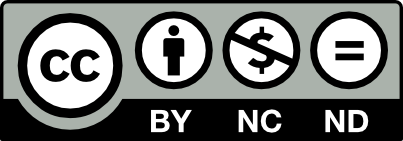Style Guide - AI References
AI References
Incorporating AI into your worldbuilding can be a powerful tool for generating images, text, and even entire storylines. While AI isn’t for everyone, it offers a unique way to enhance creativity, streamline the development process, and explore new ideas. This section of the template is designed to help you track your use of AI—whether it’s storing reference images, cataloging common prompts, or keeping notes on AI-generated content. By organizing these elements, you can ensure that your AI-assisted creations remain consistent and aligned with the vision of your world.AI Text Prompting Template for Worldbuilding
Guidance
Tone:
Describe the tone you want the AI to use when generating content. This could be formal, casual, humorous, dark, epic, etc. Consider how the tone aligns with the overall atmosphere of your world.
Example: “Use a formal and scholarly tone, as this article will be a historical account of an ancient empire.”
Input:
Clearly outline the information or context you are providing to the AI. This could include background details, specific elements you want to include, or any constraints on the content.
Example: “Generate a description of a city that has been abandoned for centuries, with a focus on the decaying architecture and overgrown vegetation.”
Output:
Specify what you want the AI to produce. This could be a narrative passage, a list of ideas, a character bio, a dialogue exchange, or any other type of content.
Example: “Provide a 300-word description of the city, emphasizing the eerie and desolate atmosphere.”
Persona:
If relevant, describe the persona or perspective the AI should adopt while generating the content. This might be a character from your world, a narrator with a specific point of view, or even a neutral voice.
Example: “Write from the perspective of an explorer discovering this city for the first time, with a mix of awe and trepidation.”
Specific Guidelines or Preferences:
Include any additional instructions or preferences that will help the AI generate content that fits seamlessly into your world. This could be related to style, vocabulary, or thematic elements.
Example: “Avoid using modern technology references. Focus on nature reclaiming the city and the sense of lost grandeur.”
Review and Iterate:
After receiving the output, review it to ensure it aligns with your vision. If needed, provide feedback or request revisions. Iteration is key to refining the content to match your worldbuilding needs.
Example
Template Example:
Tone: Dark and mysterious
Input: A description of an ancient forest filled with forgotten magic and hidden dangers
Output: 200-word description focusing on the atmosphere and sense of danger
Persona: An old traveler who knows the forest's secrets but speaks cautiously
Specific Guidelines or Preferences: Avoid mentioning specific creatures; focus on the eerie silence and the feeling of being watched
AI Image Prompting Template for Worldbuilding
Guidance
Tone & Style:
Describe the overall tone and artistic style you want the image to convey. This could be realistic, cartoonish, dark, vibrant, etc. Mention any specific art styles or movements that should influence the image.
Example: “Create a dark, moody landscape with a realistic style, reminiscent of Gothic horror.”
Subject & Focus:
Clearly define the main subject of the image and any focal points. Specify what should be emphasized in the composition, such as characters, objects, or scenery.
Example: “Depict an ancient forest with towering, twisted trees as the main focus. Include a faint, glowing light deep within the forest to draw attention.”
Color Scheme:
Specify the color palette you’d like the AI to use in the image. Mention any particular colors or combinations that are important to your world’s aesthetic.
Example: “Use a muted, desaturated color scheme with shades of dark green, gray, and hints of pale blue.”
Lighting & Mood:
Describe the lighting conditions and overall mood you want the image to convey. Consider how light and shadow play a role in creating the atmosphere.
Example: “Set the scene during twilight with soft, diffused light filtering through the trees. The mood should be eerie and mysterious.”
Background & Details:
Provide instructions for the background and any additional details that should be included. Mention elements that should complement the main subject without overpowering it.
Example: “The background should feature dense underbrush and distant, shadowy figures barely visible through the fog. Add subtle details like ancient runes carved into the trees.”
Specific Guidelines or Preferences:
Include any other specific instructions or preferences that will help the AI generate an image that aligns with your world’s vision. This could include avoiding certain elements or focusing on particular themes.
Example: “Avoid bright, vibrant colors and ensure the image feels cohesive with the overall dark fantasy theme.”
Review and Iterate:
After receiving the image, review it to ensure it meets your expectations. If needed, provide feedback or request adjustments to refine the image according to your worldbuilding needs.
Example
Template Example:
Tone & Style: Realistic, medieval fantasy
Subject & Focus: A knight standing on a hill overlooking a battlefield, with the focus on the knight's armor and the setting sun behind him
Color Scheme: Warm tones with gold, red, and brown hues
Lighting & Mood: Golden hour lighting with a heroic yet melancholic mood
Background & Details: Rolling hills with a distant battlefield, smoke rising from the ground, and a few scattered banners
Specific Guidelines or Preferences: The knight should look weary but resolute, avoiding overly bright colors to maintain a somber tone






Comments